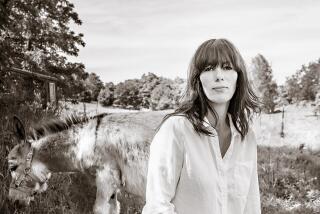Ferreting Out Another Switzerland
- Share via
ZURICH, Switzerland — Geography lesson No. 1 teaches you that the scenery in Switzerland is dictated by movie-set designers whose fantasies lean toward the idyllic. Geography lesson No. 2 teaches you that Swiss men have nothing better to do than yodel at their livestock, unless they’re busy in a Zurich bank board room dealing with big-bucks wealth and numbered accounts.
Let me tell you about another Switzerland, the one you never read about, the one the country’s tourist offices don’t have any brochures about.
Last winter I ferreted out a lot of out-of-the-way, unusual attractions, most of which lie off the main tourist stops and all of which are totally obscure, having escaped the attention of the five-countries-in-10-days travel crowd.
Frog Museum
There’s a Frog Museum in Estavayer-le-Lac (sometimes called the City of the Rose) on the south shore of Lake Neuchatel, an hour’s train ride from Lausanne. The museum goes back to the year 1853 when Francois Perrier, a ship’s captain in the service of Napoleon III, discovered a method of preserving frog skins and filling them with sand. As a hobby he created quite a few scenes of frogs doing what people do.
Frogs playing billiards, sitting at a poker game, singing in a choir conducted by a choirmaster frog, eating and drinking at a long dinner table, getting shaved in a barber shop, writing letters with a quill pen, swilling wine in a drunken stupor and gossiping.
There are soldier frogs, policemen frogs, judge frogs, lovebird frogs and politician frogs. One specimen you won’t find is a big frog in a little pond or a little frog in a big pond. But for anything you ever want to know about the web-footed amphibians of the suborder Displasiocoela, curator Joseph Koller awaits all questions. Worth half an hour.
Back during the last century when railroad lines in Switzerland were privately owned, one of them, now called the Berne-Loetschberg-Simplon Railway (state-owned), furnished its first-class waiting rooms with stunning musical boxes, each of about three feet square, made in polished wood.
Although a lot of them disappeared, travelers can still see some of these unusual, exquisite boxes in many of the stations (ask one of the trainmen or station personnel where).
For a small coin these song boxes will do their act. Usually attached eye-high to a wall, the musical boxes feature ballerinas pirouetting in front of the keyboard, merry-go-rounds whirling around with fairy godmother dolls, and comic figures bopping musical bells that play songs from the hit parade of 1897. Worth half an hour.
Natural History
In Geneva’s Museum of Natural History is an eye-arresting series of showcases on the second floor billed as the world’s only public ant show. Live ants from Trinidad are the stars of the never-ending performance, as more than 200,000 of them are all busy, behind their glass enclosures, swarming over an apple or an orange, chopping and clipping green leaves and other plants, carrying morsels along a ramp (the two-way traffic runs as smoothly as disciplined automobiles on a utopian superhighway).
Supervising all this fervid activity and reigning supreme in her underground cell is the queen, who is many times larger than any of her workers. The queen, according to the caption on the glass panel, lays about a thousand eggs a day and will live from 10 to 20 years. Most of the worker ants are dead within a year. Watching the life patterns of these busy bugs is an utter fascination-plus. Worth an hour.
The 800-yard-long Tamina Gorge in northeastern Switzerland is the source of radioactive springs that feed the spa town of Bad Ragaz. Gushing out at 100 degrees Fahrenheit, the waters flow at a rate of up to 2,000 gallons a minute.
You can descend into the gorge safely by traversing several long corridors, at the end of which is a narrow steam-filled shaft from which the main spring issues from a deep, rocky cauldron. As far back as 1242 bathers have been using this area, and in 1465 a bathhouse was built on the rock, into which patients were let down on ropes. Worth two hours.
Every February, during the middle of the month, the ski town of Hoch Ybrig (50 kilometers from Zurich in central Switzerland) stages a snow-sculpture contest to which self-styled artists from countries such as Germany, Holland, Belgium, France, Sweden, Italy and even Switzerland congregate to carve from blocks of ice and mounds of snow “works of art.”
Visitors who come to gawk get to cast ballots for their choices, some of which deserve a better fate than eventually having to melt away. Worth three hours. Maybe four.
More to Read
Sign up for The Wild
We’ll help you find the best places to hike, bike and run, as well as the perfect silent spots for meditation and yoga.
You may occasionally receive promotional content from the Los Angeles Times.






